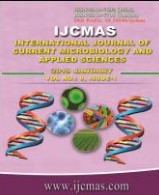


 National Academy of Agricultural Sciences (NAAS)
National Academy of Agricultural Sciences (NAAS)

|
PRINT ISSN : 2319-7692
Online ISSN : 2319-7706 Issues : 12 per year Publisher : Excellent Publishers Email : editorijcmas@gmail.com / submit@ijcmas.com Editor-in-chief: Dr.M.Prakash Index Copernicus ICV 2018: 95.39 NAAS RATING 2020: 5.38 |
Jharkhand is one of the notable abode of tribal populace. It is an irrefutable fact that nature has made it one of the richest regions of the earth. Among its various natural endowments vegetation is the most essential resource for mankind (Bedi, 1978). The socio-economic status and the culture of the tribals is woven around the forest. The Santhals and Mundas depend on indigenous and traditional medicine for the remedy of different diseases. An authentic investigation has been made with the assistance of village vaidyas and other educated tribals and list of plants with medicinal properties have been prepared by surveying in sample villages of Jharkhand District (Ghosh, 1971). Some plants were selected some plants from the districts of Jharkhand and compared its medicinal uses among the tribals. The study has revealed the fact that medicinal uses of these plants vary in these districts (Topno and Ghosh, 1999). For example cassia fistula is used by santhals in blood purification, diarrhoea, Jaundice and liver complain while in Ranchi district the Mundas use this plant in constipation, Snakebite, skin disease and rheumatism (Basu, 2005). It was also found that several plants have similar ethnomedicinal uses with valid scientific name (Jain, 1980).
 |
 |
 |
 |
 |